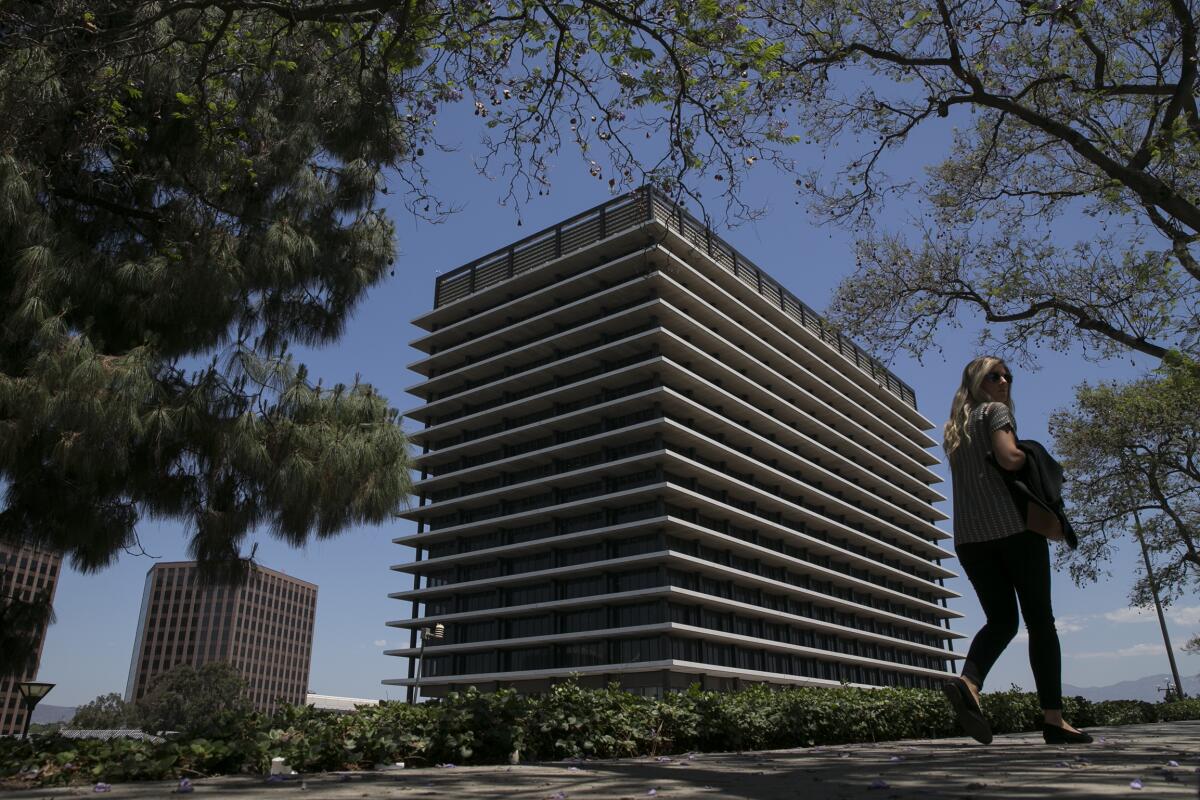DWP ratepayer advocate predicts fee increases, recommends delaying city’s 100% clean energy timeline

Los Angeles residents and businesses will face higher electric bills as the Department of Water and Power transitions to 100% clean energy, according to a report by the city’s Office of Public Accountability.
Monthly bills could rise 7.7% annually in the coming years if the city sticks to its goal of 100% clean energy by 2035, according to the report, which deems the cost “not reasonable” for customers and recommends delaying the 2035 benchmark.
The median monthly electric bill for apartments and homes is $65.81, according to the DWP. Increases in sewer fees, which appear on the same bill, have also been proposed by the city.
Fred Pickel, the ratepayer advocate for the Office of Public Accountability, an independent city department that oversees DWP rates, expressed concern that in the rush to meet the 2035 goal, the DWP could commit to outdated technology, which could be more costly in the long run.
One example is the DWP’s adoption of battery storage, which could help retain solar power. That technology is expected to change in the coming decade.
The DWP is seeking to phase out coal and gas and boost wind, solar and geothermal power, as well as possibly green hydrogen, and get to 100% clean energy by 2035.
The 2035 goal, part of an effort to reduce the planet-heating carbon emissions that result in deadly heat waves and intense wildfires, among other consequences, was first announced by then-Mayor Eric Garcetti in 2021.
The state of California has a similar mandate, but with a deadline of 2045.
DWP bills are expected to go up because of new systems to distribute the clean energy and new technology such as “smart” thermostats, as well as staffing increases, according to the Office of Public Accountability.
Pickel acknowledged that his report relies on information from the DWP’s 2022 blueprint for the city energy supply for the next few decades.
The 2024 version of that plan will be released later this year, likely altering the utility’s cost projections.
The Office of Public Accountability report also doesn’t account for the billions in federal dollars available to utilities under the 2022 Inflation Reduction Act, which is intended to help households save money on energy bills.
Pickel acknowledged that the report doesn’t include the costs to the planet or health effects on humans that might result from delaying the longstanding 2035 goal.
Still, Pickel expressed concern about the DWP’s approach to meeting the 2035 goal, which he has previously stated but never as explicitly. Pickel, who is retiring later this year, quoted President Eisenhower in his report, writing, “Plans are worthless, but planning is everything.”
“People justifiably want to reduce carbon as fast as they can,” Pickel told The Times. “But L.A. will have a bigger impact if we can convince people that it can be done cost effectively and quickly ... We shouldn’t blindly charge ahead for 2035 come hell or high water.”
The DWP provided a statement from Simon Zewdu, senior assistant general manager of the utility’s power system.
The DWP is “absolutely committed” to getting to 100% clean energy by 2035 in an affordable way, Zewdu said.
Mayor Karen Bass affirmed her support for the 2035 goal during her annual State of the City speech in April, saying she was “proud to continue Los Angeles’ global leadership on climate change.”
Bass’ office didn’t respond to requests for comment about the report, which was sent to city leaders last month.
If the city pushed its deadline to 2045 — the state’s yardstick — bills would rise 4.8% annually starting that year, the report said, calling the increase “modest.”
Under the 2035 scenario, the increase could be even higher than 7.7% annually, depending on how the DWP decides to transition to clean energy.
By contrast, DWP power bills have risen about 4% to 4.5% annually the last two years, Pickel said.
The projections include expected annual 2.5% inflation increases, as well as increases resulting from the state’s shift to clean energy.
Tony Wilkinson, chair of a DWP Neighborhood Council advisory committee, said that city leaders have touted the 2035 goal without laying out the costs.
He said he fully supports getting to 100% renewable energy but questioned whether waiting until 2038, for instance, would be cheaper.
“The earlier you adopt a technology, the more expensive it becomes,” he said.
Environmental leaders said they appreciate some of the report’s recommendations, including the need to spend more money on converting transportation and buildings to electric power.
But they rejected delaying the 2035 date. Julia Dowell, senior campaign organizer with the Sierra Club, said that sticking to the timeline is “absolutely critical.”
“Failing to rapidly decarbonize means exacerbating L.A.’s worst-in-the-nation air pollution and related health costs,” she said. “It also means increasing the possibility of future climate catastrophes.”
Andrea Vega, an organizer for the group Food & Water Watch, said that “there is a huge public health cost” to fossil fuel use and that L.A. needs to focus on investing in programs that mitigate rate increases.
Critics also said the report doesn’t account for some of the savings drivers might enjoy by not having to purchase gas, for instance.
Loraine Lundquist, a faculty associate at the Institute for Sustainability at Cal State Northridge, said the report “ignores the incredible costs of continuing to burn fossil fuels.”
“The wildfires sweeping the state right now make it clear that the cost of sticking with the status quo is enormous,” she said.
More to Read
Sign up for Essential California
The most important California stories and recommendations in your inbox every morning.
You may occasionally receive promotional content from the Los Angeles Times.











